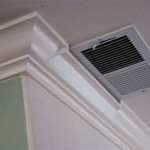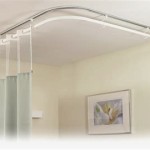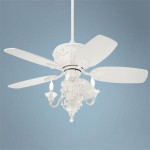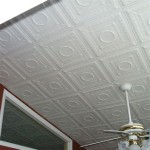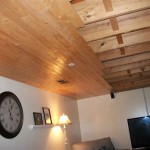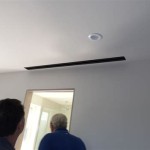Tips For Choosing The Best Beach Ceiling Fans In The World
Selecting the ideal ceiling fan for a beachside property requires careful consideration of several factors that go beyond mere aesthetics. The corrosive environment, the need for efficient cooling, and the overall design of the space all play crucial roles in determining the best option. This article provides a comprehensive guide to help navigate the complexities of choosing a beach ceiling fan that will withstand the elements and enhance the comfort and style of a coastal home.
Beach environments present unique challenges to ceiling fans. Salt air, humidity, and strong winds can quickly degrade materials that are not specifically designed for coastal use. Therefore, understanding the specific requirements of a beach setting is paramount before making a purchase.
Understanding the Environmental Factors
The primary environmental concern near the beach is the presence of saltwater. Saltwater is highly corrosive and can cause rust, corrosion, and premature failure in standard ceiling fans. The salt particles in the air settle on the fan's components, especially the motor housing and blades, leading to deterioration. High humidity levels exacerbate this issue, as moisture accelerates the corrosion process. Strong winds, another common occurrence in coastal areas, can also strain the fan's structure, potentially causing instability or damage.
To mitigate these environmental factors, select ceiling fans specifically designed and rated for damp or wet locations. These fans incorporate materials and construction techniques that offer enhanced resistance to corrosion and moisture. Check for certifications such as UL Wet Rated, which indicates that the fan has been tested and approved for use in exposed outdoor locations.
Material selection is critical. Avoid fans with components made of standard steel or iron, as these are highly susceptible to rust. Opt for fans with housings and blades made of corrosion-resistant materials such as marine-grade stainless steel, powder-coated aluminum, or high-density polyethylene (HDPE). These materials offer superior protection against salt air and humidity.
The fan's finish is another crucial aspect. Powder coating provides a durable, protective layer that resists chipping, scratching, and corrosion. Ensure that all exposed metal parts, including screws and mounting hardware, are made of stainless steel to prevent rust. Some manufacturers offer special coatings designed specifically for coastal environments, which can further extend the fan's lifespan.
Prioritizing Performance and Efficiency
Beyond durability, the performance of a beach ceiling fan is essential for creating a comfortable living space. The fan should provide adequate airflow to effectively cool the room and circulate air, reducing humidity and preventing stagnant air pockets. Efficiency is also important, as continuous operation can lead to significant energy consumption.
When evaluating performance, consider the fan's blade pitch, blade span, and motor size. Blade pitch refers to the angle of the blades, which determines the amount of air the fan can move. A steeper blade pitch generally results in greater airflow. Blade span is the diameter of the circle swept by the blades. Larger blade spans are suitable for larger rooms, while smaller blade spans are appropriate for smaller spaces.
Motor size is a key indicator of the fan's power and efficiency. Look for fans with energy-efficient motors, such as DC motors, which consume significantly less energy than traditional AC motors. DC motors also tend to be quieter and offer more speed options, allowing for finer control over airflow. The Airflow Efficiency (CFM/Watt) rating indicates how efficiently the fan converts electricity into airflow. A higher CFM/Watt rating signifies better energy efficiency.
Consider the number of speeds offered by the fan. Multiple speed settings allow for customization of airflow based on individual preferences and the prevailing weather conditions. A reversible motor is also beneficial, as it allows the fan to be used in both summer and winter. In summer, the fan should rotate counterclockwise to create a cooling breeze. In winter, the fan should rotate clockwise at a low speed to circulate warm air trapped near the ceiling, improving heating efficiency.
Consider the room's size and layout when choosing a fan. A general guideline is to select a fan with a blade span of 50-54 inches for rooms up to 400 square feet, 42-48 inches for rooms up to 225 square feet, and 30-42 inches for rooms up to 100 square feet. The height of the ceiling is also an important factor. For ceilings less than 8 feet high, a hugger-style fan that mounts flush to the ceiling is recommended. For ceilings higher than 8 feet, a downrod should be used to lower the fan to the optimal height for airflow. A downrod length of 12-18 inches is typically recommended for 9-foot ceilings.
Matching Aesthetics with Coastal Style
While durability and performance are paramount, the aesthetic appeal of a beach ceiling fan should not be overlooked. The fan should complement the overall design of the space and enhance the coastal ambiance. There are numerous styles, finishes, and design elements to choose from, allowing for a personalized look that reflects individual preferences.
Consider the overall color scheme and style of the room. Common coastal design themes include nautical, tropical, and minimalist. Nautical-themed fans often incorporate elements such as rope accents, ship wheel designs, and weathered finishes. Tropical-themed fans may feature palm leaf blades, bamboo accents, and natural wood finishes. Minimalist fans offer a clean, contemporary look with simple lines and neutral colors.
Select finishes that complement the existing decor. White, brushed nickel, and oil-rubbed bronze are popular choices for coastal homes. Wood finishes, such as light oak or driftwood, can add warmth and texture to the space. Avoid overly ornate or extravagant designs, as these may clash with the relaxed, casual atmosphere of a beach home.
The shape of the blades can also contribute to the overall aesthetic. Traditional straight blades offer a classic look, while curved or sculpted blades can add a touch of elegance and sophistication. Palm leaf blades are a popular choice for tropical-themed spaces, while fans with no blades at all can provide a modern and sleek appearance.
Pay attention to the lighting options offered by the fan. Integrated LED lights are energy-efficient and provide ample illumination. Choose a light fixture that complements the fan's style and finish. Options include traditional dome lights, modern enclosed lights, and candelabra-style lights. Consider the color temperature of the light, as warm light (2700-3000K) creates a cozy, inviting atmosphere, while cool light (4000-5000K) provides brighter, more focused illumination.
Remote controls and smart home integration are additional features to consider. A remote control allows for convenient adjustment of the fan speed and light settings from anywhere in the room. Smart home integration enables control of the fan via a smartphone app or voice assistant, adding an extra layer of convenience and automation.
Choosing the right beach ceiling fan requires careful consideration of environmental factors, performance, and aesthetics. By prioritizing durability, efficiency, and style, it is possible to select a fan that will provide years of reliable service and enhance the beauty and comfort of a coastal home.

Bahama Breezes The Best Tropical Ceiling Fans Delmarfans Com

Best Coastal Rated Fans

Bahama Breezes The Best Tropical Ceiling Fans Delmarfans Com

How To For A Ceiling Fan Reviews By Wirecutter

Keep Your Family Happy And Cool With A Coastal Fan Upgrade Home Improvement Cast

Ceiling Fan Size Guide Delmarfans Com
:max_bytes(150000):strip_icc()/outdoor-ceiling-fans-sl-tout-badge-fdb65671cbd848f7866ce0fb790321a3.jpg?strip=all)
The 10 Best Outdoor Ceiling Fans Of 2024 Tested And Reviewed
:max_bytes(150000):strip_icc()/peo-ceiling-fans-test-honeywell-belmar-52in-indoor-outdoor-led-light-danielle-yersin-02-5676d0c3b71e45559e468a7468c1772a.jpeg?strip=all)
The 8 Best Ceiling Fans Of 2024 Tested By Real People
:max_bytes(150000):strip_icc():focal(2999x0:3001x2)/peo-best-ceiling-fans-of-2023-tout-tested-4dfb78893ed943a0be2b791463a381f9.jpg?strip=all)
The 8 Best Ceiling Fans Of 2024 Tested By Real People
:max_bytes(150000):strip_icc()/Hunter-Key-Biscayne-Outdoor-Ceiling-Fan-With-Light-bff2324f17644c778bf6c4040f6d3b9f.jpg?strip=all)
The 10 Best Outdoor Ceiling Fans Of 2024 Tested And Reviewed
Related Posts

